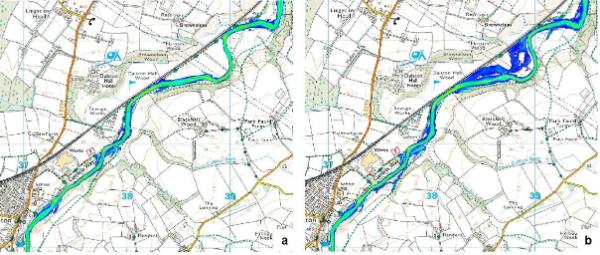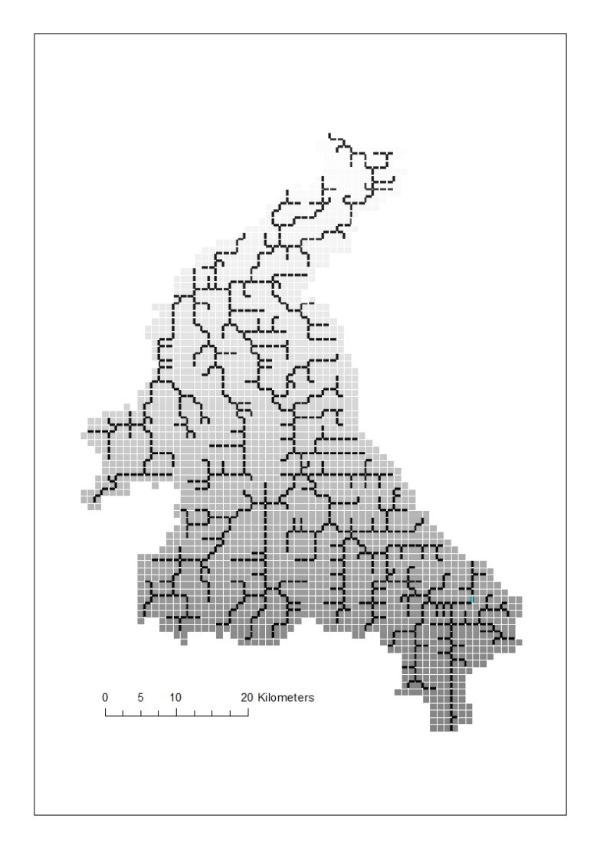WP3: Fluvial Systems
Incorporating river channel morphology into flood risk modelling
Contacts: Douglas Pender d.pender@hw.ac.uk or Heather Haynes h.haynes@hw.ac.uk at Heriot-Watt University, Edinburgh
Typically, the design and analysis of fluvial flood defence schemes is based on a single N year extreme flow event using a single survey of the river channel and floodplains. Adopting such an approach assumes that the capacity of the channel is identical for all subsequent N year events, thus failing to account for the morphodynamic memory of the system as a result of the antecedent flow regime. Recent academic studies, and flood events (e.g. Somerset Levels 2013/14), have shown that changes to the channel geometry, as a result of sedimentation, can significantly increase the flood risk. To provide a more robust estimate of future flood risk, the uncertainties associated with these changes should be accounted for in inundation modelling and flood defence scheme design. Thus, the aim of the work conducted here is to develop modelling methods incorporate these changes into future flood risk assessments.
Recent work conducted here has shown that, the sequencing in which flood events occur can have a significant influence on the subsequent changes in river channel geometry. As such, current work involves the simulation of sediment transport and morphological changes for multiple 50 year flow sequences on the River Caldew, UK. The sediment transport and changes in channel geometry have been predicted using the, commonly applied, 1D HEC-RAS model. Results from these changes were then used to define a potential ‘worst-case’ future channel configuration, used to assess the impacts of future flood events, using 1D and 2D hydrodynamic models. Results show that the effects of 50 years of morphological change can result in significant increases in future flood risk. Additionally, at higher frequency events, these changes can turn previous in-bank high flow events to out-of-bank flood events as shown in Fig. 1.

Fig. 1: Flood extents predicted from a 1D/2D hydrodynamic model using (a) the original channel configuration and (b) the worst-case potential configuration after 50 years of morphological change
Fluvial Flood Risk – Source modelling using catchment-based time-series data using catchment scale models and process-based approaches
Contact: Ian Holman i.holman@cranfield.ac.uk and Victoria Janes v.j.janes@cranfield.ac.uk
Understanding and estimating sediment generation processes within river catchments is of great importance for managing river water quality and riverine habitats. Channel bank erosion has been estimated to contribute a significant proportion of the sediment budget within some catchments but is poorly represented in most catchment models. This work describes the improvement and evaluation of bank erosion processes within the physically-based SHETRAN model. The bank erosion model has been modified to improve representation of channel bank erosion processes by incorporation of the influences of vegetation and channel sinuosity. The incorporation of channel sinuosity provides spatial variation of the magnitude of simulated bank erosion. The presence of channel bank vegetation provides a stabilising influence on channel banks, reducing erosion rates. Within the modified model, the removal of channel bank vegetation after large flood events and recovery over time is represented. The influence of further flood events during the vegetation recovery period is enhanced due to the increased erodibility, enabling the model to represent memory within the catchment. The developed model has been applied to the Eden catchment, Cumbria UK (Fig. 2), and validated using observed long-term bank erosion data from a GIS overlay methodology.

Fig. 2 SHETRAN model representation of the Eden catchment, Cumbria, UK.